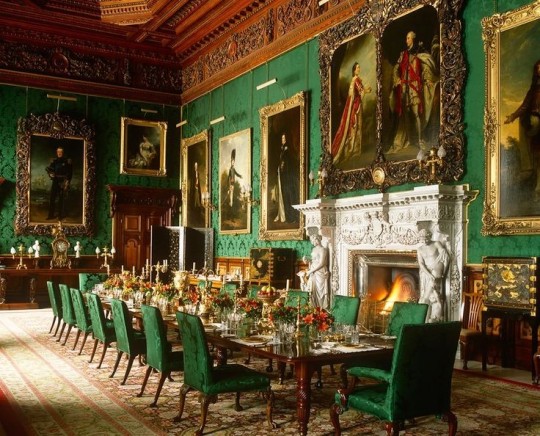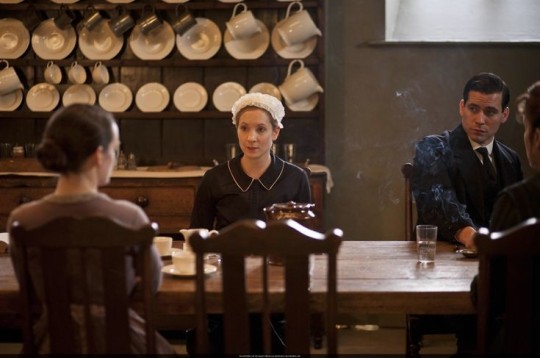Don't wanna be here? Send us removal request.
Text
I’m hoping some of my writblr friends can help this break containment but I have questions.
I’m doing publishing research and looking at self publishing. Can anybody who has self published talk about your experiences? Does your book get to the demographic you want it to? Do any self published books go into print or is it mainly online? It seems like a lot of people are for it over trad publishing but I think it still scares me a little.
263 notes
·
View notes
Text
How Not to Commit a Crime Against Historical Fashion–A Basic Guide for Writers
I have been reading a lot (mostly YA) (pseudo)historical (fantasy) novels (and let’s not even get started on what’s going on TV), and I’m stunned and horrified by the complete lack of basic understanding of historical fashion most authors display (not you, Rebecca Ross, darling, you didn’t do anything wrong). So here is a little guide from a miffed little gremlin who knows just a tad bit more about what people wore in the ye olden days than the average person (really, I’m no expert), so YOU don’t commit these heinous crimes:
Keep reading
193 notes
·
View notes
Text
Fantasy Guide to A Great House (19th-20th Century) - Anatomy of the House

When we think of the Victorians, the grand old Gilded Age or the Edwardians, we all think of those big mansions and manors where some of our favourite stories take place. But what did a great house look like?
Layout

All great houses are different and some, being built in different eras, may adhere to different styles. But the layout of certain rooms usually stayed somewhat the same.
The highest floors including the attic were reserved the children's rooms/nursery and the servants quarters.
The next floor would be reserved for bedrooms. On the first/ground floor, there will be the dining room, drawing room, library etc.
The basement/cellar would be where the kitchens and other food related rooms would be. Servants halls and boot rooms may also be down here too along scullery, where sometimes a maid would clean.
Rooms used by Servants

Boot Room: The Boot Room is where the valets, ladies maids, hallboys and sometimes footmen clean off shoes and certain items of clothing.
Kitchen: The Kitchen was usually either in the basement or the first floor of the house, connected to a garden where the house's vegetables were grown.
Butler's Pantry: A butler's pantry was where the serving items are stored. This is where the silver is cleaned, stored and counted. The butler would keep the wine log and other account books here. The butler and footmen would use this room.
Pantry: The Pantry would be connected to the kitchen. It is a room where the kitchens stock (food and beverages) would be kept.
Larder: The larder was cool area in the kitchen or a room connected to it where food is stored. Raw meat was often left here before cooking but pastry, milk, cooked meat, bread and butter can also be stored here.
Servants Hall: The Servant's Hall was where the staff ate their meals and spent their down time. They would write letters, take tea, sew and darn clothes. The servants Hall would usually have a fireplace, a large table for meals, be where the servant's cutlery and plates would be kept and where the bell board hung. (these bells were the way servants where summoned)
Wine Cellar: The wine cellar was where the wine was melt, usually in the basement. Only the butler would be permitted down there and everything would be catalogued by him too.
Butler's/Housekeeper's sitting rooms: In some houses, both the butler and the housekeeper had sitting rooms/offices downstairs. This was were they held meetings with staff, took their tea and dealt with accounts.
Scullery: The scullery was were the cleaning equipment was cleaned and stored. The scullery may even also double as a bedroom for the scullery maid.
Servery: The Servery connected to the dinning room. It was where the wine was left before the butler carried it out to be served. Some of the food would be delivered here to be carried out as well.
Servant's Sleeping Quarters: All servants excepting perhaps the kitchen maid and outside staff slept in the attics. Men and unmarried women would be kept at seperate sides of the house with the interconnecting doors locked and bolted every night by the butler and housekeeper. If the quarters were small, some servants may have to share rooms. Servants' bathrooms and washrooms would also be up there, supplied with hot water from the kitchens.
Rooms used by the Family

Dining room: The dining room was where the family ate their breakfast, lunch and dinner. It was also where the gentlemen took their after dinner drink before joking the ladies in the drawing room.
Drawing room: The Drawing Room was sort of a living/sitting room. It was mainly used in the evenings after dinner where the ladies would take their tea and coffee before being joined by the men. It could also be used for tea by the ladies during the day. The drawing room was seen as more of a women's room but any of the family could use it. The drawing room was a formal room but could also be used for more casual activities.
Library: The library is of course where the books are kept. The family would use this room for writing letters, reading, doing business with tenants and taking tea in the afternoons.
Bedrooms: The bedrooms would take up most of the upper floors. The unmarried women would sleep in one wing with bachelors at the furthest wing away. Married couples often had adjoining rooms with their own bedrooms in each and equipped with a boudoir or a sitting room.
Nursery: Was where the children slept, usually all together until old enough to move into bedrooms. They would be attended to be nannies and nursemaids round the clock.
Study: The study was a sort of home office where family could do paperwork, chill and write letters.
Dressing room: Dressing Rooms where usually attached to bedrooms where the family would be dressed and their clothes would be stored. The valets and ladies maids would have control of the room.
Hall: The hall was where large parties would gather for dancing or music or to be greeted before parties.
Furnishings and Decor

Most of these Great Houses were inherited which means, they came with a lot of other people's crap. Ornaments from anniversaries, paintings bought on holiday, furniture picked out by newly weds, all of it comes with the house. So most of the time everything seems rather cluttered.
As for Servant's Quarters, most of the furnishings may have been donated by the family as gifts. Most servants' halls would have a portrait of the sovereign or sometimes a religious figure to install a sense of morality into them.
2K notes
·
View notes
Text
How to plan a long-term creative project for serial publication:
1. Make a firm decision about how big a single update is going to be, and estimate your sustainable update frequency based on that. This estimate should be based solely on your own demonstrated performance; you may anticipate that future productivity will exceed past productivity, but never make long-range plans on the assumption that future productivity will exceed past productivity. That is called the Planning Fallacy, and it will eat you alive.
2. Estimate how often you’re likely to miss updates. As a rough guideline, if you’re physically and mentally healthy and have no major commitments that would interfere with your ability to work on the project, figure that you’ll miss about 10% of your updates for various reasons. If you have health issues or frequent Real Life commitments, make it 20%. If 20% sounds low to you, you weren’t being honest with yourself about your sustainable update frequency; return to step 1 and re-assess.
3. Figure that you’ve got about two years before you lose interest in the project, gain some new commitment that will preclude continuing to work on it, or your art style evolves enough to make creative continuity impractical. If there’s some upcoming major life change that you’re able to anticipate – like, say, graduating from school – use either two years or that event as your soft deadline, whichever is less.
4. Use the figures from steps 1-3 to estimate how many updates you’re likely to be able to squeeze into this project, and write your outline/script based on that. You don’t need to wrap up every tiny little loose thread by that point, but ideally it needs to reach a point where you could stop and be satisfied with whatever conclusion has been reached. If you get there and you’re still enthusiastic about continuing, fantastic – return to step 1 and re-assess.
So, as a simple example: if you’re planning a webcomic, you figure you can reasonably manage about 1 page a week, and you’ve got a lot going on that’s likely to get in your way, that’s (2 years * 52 weeks/year * 1 update/week * 80% success rate on updates) = around 83 pages to work with, or about the length of a four-issue miniseries. What kind of story can you tell in 80-odd pages?
(Hint: it’s not a story that involves fifty-page combat scenes!)
11K notes
·
View notes
Text
Advice for Creating a Magic System
As a fantasy author, I thought I'd share my 5 tips for creating a captivating magic system.
1. Are you writing low fantasy or high fantasy?
Firstly, it's good to know from the get-go whether you're creating a magic system for a low fantasy or high fantasy story.
Low fantasy doesn't necessarily mean there are less fantastical elements or that the story has to take place in a version of the real world. Low fantasy simply indicates that the fantasy elements/magic is not commonplace in that world. Magic and other fantasy elements exist, but only a privy few know about it.
Examples of low fantasy stories include Harry Potter by She Who Shall Not be Named, the Mortal Instruments by Cassandra Clare, Ninth House by Leigh Bardugo, Twilight by Stephenie Meyer and my book To Wear A Crown.
High fantasy, on the other hand, indicates that the fantastical elements and magic are known about and commonplace in that world. The people of the world know that magic exists, that there are fantastical beings, other races etc.
Examples of high fantasy stories include Eragon by Christopher Paolini, Crescent City by Sarah J Maas, The Lord of the Rings by J.R.R Tolkien, and Red Queen by Victoria Aveyard.
2. Hard magic systems vs soft magic systems
The next thing that's vital to decide is whether you're creating a hard or soft magic system.
A hard magic system has built-in limitations. There are certain things that magic can do and that's it. Examples of stories with hard magic systems include Avatar: The Last Airbender and Shadow and Bone by Leigh Bardugo.
A soft magic system doesn't have inherent limitations in relation to what it can achieve. Examples of soft magic systems include Eragon, Harry Potter and The Lord of the Rings.
3. What can magic do?
Now that you know whether you're writing low or high fantasy, and whether you're working with a hard or soft magic system, it's time to create some magic!
This is the part where I can't give you too much guidance, because it's all about your creativity.
What do you want magic to look like in your story? What do you want magic to be able to achieve? How big of a role do you want magic to play in the story and your characters' lives?
Do you want different classes of magic wielders, each with mastery over their own element? Do you want magic to be a flexible tool that can be used to achieve almost anything? Do you want your magic to be limited to telepathic actions or creating portals? Do you want different people to have power over different aspects of nature or different magical disciplines?
Can wielders use magic without any tools, or do they need spells, runes or rituals?
The possibilities are endless, but it's important to establish exactly what magic is capable of in your world.
4. How does it work and where does it come from?
Now we know what the magic can do. Next up is why it can do those things. Where does the power of the magic come from and how do wielders command it?
Does the power/force of magic come from within the wielder? Does it draw from inner life force and energy? Does it draw on energy from another realm or dimension? Does it pull from the surrounding natural elements? Does the power come from a deity or from demonic forces?
Identify the source/origin of the magic.
From there, elaborate on how it works. How does a wielder access the source of the magic? Is it through strength of will, incantations, selling their soul etc.?
For example, let's say that the power of your world's magic comes from the cosmic energy of another dimension. In order for wielders to access that energy, they draw specific sigils on their skin and these sigils act as portals to that world. Once the sigil is complete, the cosmic power flows into the wielder and they can now command it.
5. The limitations
Very importantly, you have to be clear on the limitations of your magic system. Fantasy magic systems often fall flat because they don't have clear confines.
If you're writing a hard magic system, this step is a bit easier, since there are inherent restrictions on what magic can do. With soft magic systems, you have to decide just how much magic is capable of.
But whether you're writing a hard or soft magic system, you need to consider the cost of using magic.
Does the use of magic drain the wielder's energy? Does each instance of using magic darken the wielder's soul or deteriorate their body further? Does using magic damage the natural world around the wielder or drain others of their life force?
Magic without a cost, limitations or consequences just isn't as captivating.
Reblog if you liked these tips. Comment with your own advice. Follow me for similar content.
3K notes
·
View notes
Note
Hi there! Hope your day is good!
I'm a fanfic writer for Overwatch. I have a ship I'm really interested in but it's a rarepair. Like- REALLY rarepair (not illegal, promise). I want to write this ship in a way so people who read aren't like "Ugh, seriously..? Why are they shipping this?" And more in a "Huh, I've never thought of them like that, that's pretty interesting" way. How can I depict the ship in a good and attention-grabbing way? What are some good qualities of writing romance and how do I add them in?
Fan-Fiction: Writing a Compelling Rarepair
I would suggest starting by doing a little journaling about what made you ship this pair in the first place. What stuck out to you about their chemistry and relationship (or potential chemistry and potential relationship?) What are some non-canonical situations where you think this existing or potential chemistry would really shine? If this pair has interacted canonically, what would you consider to be the moments that really cemented their actual or potential chemistry/relationship to you? What are some non-canonical situations where you think this pair could strengthen their bond? And what are some existing or potential challenges to their relationship? These are going to be the selling points for the reader, where you convince them of the merit you see in this pairing.
The qualities of romance really depend on the type of romance you want to write, but whether you're getting the pair together for the first time or writing about an established pairing, one of the most important things you can do is illustrate existing and growing chemistry through the "subtle signs of love." I'll put a link in below, but these would be things like making eye contact from across the room, sharing smiles or "knowing looks," finding excuses to touch or be near one another, etc. Another important element is to illustrate the ways in which they establish and grow their bond or strengthen their existing bond. This includes things like confiding in one another, sharing past memories, and going through tough or strenuous situations together where they have to rely on one another.
Here are some links!
Guide: Creating Romantic Chemistry Guide: Characters Falling in Love Guide: Writing a Slow Burn Romance The Subtle Signs of Romantic Interest and Love Transitioning Through Levels of Affection Friendship Turns to Romance Romance Started to Build Before Story Began Showing Feelings Developed Pre-Story Through Recall
Have fun with your story!
•••••••••••••••••••••••••••••••••
I’ve been writing seriously for over 30 years and love to share what I’ve learned. Have a writing question? My inbox is always open!
Learn more about WQA
Visit my Master List of Top Posts
Go to ko-fi.com/wqa to buy me coffee or see my commissions
67 notes
·
View notes
Text
Etta's Guide to Writeblr (March 2023)
So you fled here from Twitter/TikTok... Where to start?
Welcome to Writeblr! Pull up a chair, open those documents, and pour yourself a cup of your favorite tea, coffee, or cocoa. The first thing you'll want to do is start following other writers. Check out this post for recommendations! Search through the notes to find hundreds more. Since I made that post, a bunch of people mentioned they're lurking and still trying to figure out tumblr, so I thought I'd make this post to help people get settled.
How to set up your blog
Make your blog name something not resembling a pornbot - it can be whatever you want, anything fun goes, just not [name###]. If you include "writer" or "author" somewhere in the url it makes it easier to spot writeblrs at a glance but it's not a requirement
Change your profile to something that's not the default, Make sure you have a blog title, and add a little description in your blog header if you feel like it!
Make a pinned post introducing yourself (pls don't use your real name or any IDing information for privacy's sake, this isn't facebook), a short summary of your WIPs, and links if you have an author's website/newsletter/ao3/etc. You can check my pinned post for an example
Make intro posts for each WIP! You can spruce these up with graphics (canva and unsplash are both great free resources to make edits/moodboards), excerpts, lists of tropes, character intros, etc. Link to the WIP intro in your pinned post so it's easy to find! You can update these as often as needed
If you want to make character intros, go wild. If you can't draw, piccrew is a great option. Just start talking about your WIP!
Come up with a tagging system to keep your blog organized. I recommend individual wip tags or at least one for your original writing in general so it's easy to search for your work on your blog
Keep track of Taglists for your WIPs. Whenever you post a new thing about your story, tag the people who asked to be notified to make sure they see it! Only tag people who ask to join the taglist, but it's a good way to keep track of interest. It's normal to have multiple taglists for each story+ one general writing taglist.
How to make writer friends
Reblog their work and add nice comments, either in the tags, comments, or the reblog itself People notice regulars in their notes and appreciate the attention. I promise it's not weird to compliment a total stranger
If that's too intimidating, community events are your friend!
Weekly Ask Games: These are weekly events that are loosely themed where writers send each other asks about their WIPs! The most common are Storyteller Saturday (about the writing process), Blorbsday (aka Blorbo Thursday about characters), and Worldbuilding Wednesday (about the setting of your story). If you answer these late, nobody really cares, but it's a fun way to receive prompts and learn more about other people's stories.
Ask Games/Memes: These are posts with lists of questions you can reblog from other people, sometimes themed or listed with emojis. It's common courtesy to send an ask from the list to the person you reblog it from, then people can send you questions as well, so you can talk about your stories! You can search for dozens of them
Tag games: There's a ton of different types of tag games, but basically someone @s you with a challenge/question, you reblog with your answer, and then @ a bunch of other people to continue the chain. Some common ones are Heads Up 7s Up (share the last 7 lines of your WIP), Last Line Tag (share the last line you wrote), and Find the Words (ctrl+f the given words in your doc and share the results, then give new words).
Formal events: These are community wide participation challenges organized by certain blogs! @writeblrsummerfest is every July?? August? I think? It's run by @abalonetea a few years strong, and there are daily prompts and ask games! @inklings-challenge is a month-long short story entry for Christian writeblrs. I think there was a valentines event in February. @moon-and-seraph is hosting a pitch week soon! Since these are more organized, it's very easy to find similar blogs and support!
Misc. Notes on using Tumblr
Follow the tags #writeblr and #writeblr community to find other writers, as well as other tags that interest you like #fantasy for example
If you want to bookmark a post to read later, you can like it and/or save it to your drafts
The queue/schedule function is very useful if you want to space out posts or have a backlog to keep your blog running when you get busy. This is good for the community because it gives older posts a chance to be rediscovered! You can change the posting frequency in the settings.
REBLOG YOUR OWN STUFF. People aren't always on at the same times and so it's the best way to account for people with different schedules and timezones. If you're worried about being annoying, you can tag those #self reblog or something similar and other people can filter the tag, but otherwise it's a welcomed and accepted practice.
If your excerpt is pretty long, put it under a cut. On desktop you can do this by selecting the squiggly button on the far right when you make a new paragraph, on mobile type :readmore: then hit enter.
It's polite to add descriptions to images and videos for visually or auditory impaired people. If you don't know how to write descriptions, here's a good resource
In your dashboard settings, it's best to shut off the options "Best Stuff First" and "Based on your Likes". These function as the website algorithm and suppresses the blogs you actually follow, which defeats the purpose of the site, letting the dash be in reverse chronological order. Also turn off Tumblr Live because it's malware as far as anyone's concerned.
Curate your experience, block the trolls, and be nice
Again, welcome to the community! I hope you have a ton of fun!
1K notes
·
View notes
Text
Resources For Describing Emotion

Emotions
Without Making Your Character Feel Too Self Aware
Showing Emotion Without Telling About It
Emotions Associated With Body Language
Telling Readers What The Character Doesn’t Want To Show
Hiding Emotions
Expressing Cardinal Emotions: Masculine vs. Feminine
Writing Extreme Emotion Without Melodrama
Specific Emotions
Conveying Shock
Conveying Embarrassment
Conveying Disappointment
Conveying Love/Attraction
Conveying Annoyance
Conveying Relief
Conveying Uncertainty
Conveying Impatience
Conveying Shame
Conveying Resentment
Conveying Panic
Conveying Guilt
Conveying Desperation
Conveying Sarcasm & Verbal Disrespect
Conveying Confusion
Conveying Stubbornness
Conveying Frustration
Conveying Indifference
Conveying Indignation
Conveying Confidence & Pride
Conveying Smugness
Conveying Enthusiasm
Conveying Curiosity
Conveying Hopefulness
Conveying Unease
Conveying Reluctance
Conveying Worry
Conveying Humility & Meekness
Conveying Happiness & Joy
Conveying Amusement
Conveying Disgust
Conveying Resignation
Conveying Jealousy
Conveying Anticipation
Conveying Contentment
Conveying Defeat
Conveying Excitement
Conveying Fear
Conveying Hatred
Conveying Hurt
Conveying Being Overwhelmed
Conveying Sadness & Grief
Conveying Satisfaction
Conveying Somberness
Conveying Sympathy & Empathy
Conveying Wariness
Conveying Defensiveness
Conveying Desire
Conveying Doubt
Conveying Energy
Conveying Exhaustion
Conveying Hunger
Conveying Loneliness
Conveying Physical Pain
Emotional Wounds
A Role Model Who Disappoints
A Sibling’s Betrayal
A Speech Impediment
Becoming a Caregiver at an Early Age
Being Bullied
Being Fired or Laid Off
Being Held Captive
Being Mugged
Being Publicly Humiliated
Being Raised by Neglectful Parents
Being Raised by Overprotective Parents
Being So Beautiful It’s All People See
Being the Victim of a Vicious Rumor
Being Stalked
Being Trapped in a Collapsed Building
Being Unfairly Blamed For The Death of Another
Childhood Sexual Abuse (by a family member or known person)
Discovering One’s Parent is a Monster
Discovering One’s Sibling was Abused
Experiencing a Miscarriage or Stillbirth
Failing At School
Failing To Do The Right Thing
Financial Ruin Due To A Spouse’s Irresponsibility
Finding Out One’s Child Was Abused
Finding Out One Was Adopted
Getting Lost In a Natural Environment
Growing Up In A Cult
Growing Up in a Dangerous Neighborhood
Growing Up In Foster Care
Growing Up In The Public Eye
Growing Up In The Shadow of a Successful Sibling
Growing Up with a Sibling Who Has a Chronic Disability or Illness
Having Parents Who Favored One Child Over Another
Having To Kill Another Person To Survive
Infertility
Infidelity (emotional or physical)
Losing a Limb
Losing a Loved One To A Random Act of Violence
Making a Very Public Mistake
Overly Critical or Strict Parents
Physical Disfigurement
Rejection By One’s Peers
Telling The Truth But Not Being Believed
The Death of a Child On One’s Watch
Victimization via Identity Theft
Watching A Loved One Die
Wrongful Imprisonment
Spending Time In Jail
Suffering From a Learning Disability
Motivation
Achieving Spiritual Enlightenment
Avoiding Certain Death
Avoiding Financial Ruin
Beating a Diagnosis or Condition
Being Acknowledged and Appreciated by Family
Being a Leader of Others
Being the Best At Something
Caring for an Aging Parent
Carrying on a Legacy
Catching The Bad Guy or Girl
Coming To Grips With Mental Illness
Discovering One’s True Self
Escaping a Dangerous Life one Doesn’t Want
Escaping a Killer
Escaping a Widespread Disaster
Escaping Confinement
Escaping Homelessness
Escaping Invaders
Finding Friendship or Companionship
Finding a Lifelong Partner
Having a Child
Helping a Loved One See They Are Hurting Themselves and Others
Obtaining Shelter From The Elements
Overcoming Abuse and Learning To Trust
Overcoming Addiction
Protecting One’s Home or Property
Pursuing Justice For Oneself or Others
Realizing a Dream
Reconciling with an Estranged Family Member
Rescuing a Loved One From a Captor
Restoring A Name or Reputation
Righting a Deep Wrong
Seeking Out One’s Biological Roots
Stopping an Event From Happening
Trying Again When One Has Previously Failed
Support Wordsnstuff!
Request A Writing Help Post/Themed Playlist/Writing Tips!
Send Me Poetry To Feature On Our Instagram!
Receive Updates & Participate In Polls On Our Twitter!
Like us and share on Facebook!
Read More On Our Masterlist & See our Frequently Asked Questions!
Tag What You Want Me To See With #wordsnstuff!
Participate in monthly writing challenges!
108K notes
·
View notes
Photo




FINALLY 👏 SOMEONE 👏 SAID 👏 IT. 👏 ALL OF IT. 👏ALL AT ONCE. 👏
(Thank you @fallingawkwardly for bringing this to my attention.)
76K notes
·
View notes
Link
Since 2011, researchers have photographed 74 palimpsests, which boast 6,8000 pages between them. And the team’s results have been quite astonishing. Among the newly revealed texts, which date from the 4th to the 12th century, are 108 pages of previously unknown Greek poems and the oldest-known recipe attributed to the Greek physician Hippocrates.

4K notes
·
View notes
Photo

I will continue to build upon this list as time goes on. For now, I hope you find something useful!
Worldbuilding Prompt of the Day Tag
Brainstorming Series Posts
Magic Systems, Part One
Magic Systems, Part Two
New Species
New Worlds
New Cultures
New Civilizations
Politics and Government
Map Making
Belief Systems & Religion
Guilds, Factions, Groups
War & Conflict
Science & Technology
Wildlife & Ecosystems
Species/Races
Creating long-lived species
Evolution of sexual reproduction in fictional species
Writing in a world without humans
Developing Fantastic Races (Link)
Creating Realistic Aliens and Their Worlds (Link)
Language
Languaging
Handling “Foreign” Language Within the Narrative
Developing Ancient Languages
Google Ngrams: tool for researching period-appropriate language
Astronomy/Planetary Physics
Multiple Moons Effect on Planet
Controlling the Biomes on your World (with Science!)
Controlling the Gravity on your World (also with Science!)
Giving Your World Fantastic Skies (Link)
Why Tatooine is Plausible: Orbitary Mechanics of Binary Star Systems (Link)
What if Earth Had Two Moons?
Geology/Land
Map Making Photoshop Brush Set
How to develop a country when you don’t know where to start
Useful Geography Descriptors
Creating a World with Realistic Terrain
Forest types (aesthetic)
Laying out Villages and Towns
Specific Settings
Differentiating between Ancient Times and Medieval Times
Tips and Ideas for Writing Post-Apocalypse
Worldbuilding when there’s no “world” present
General Worldbuilding
Words for sections within a city
Using Characters as Worldbuilding Tools
Creating Unique Cultures
Prioritizing Worldbuilding Details In the Narrative
Filling in the Details
Weaving in the Details (Link)
Creating Realistic Cultures (Link)
Being a God of Your Own World (Link)
How to Create a Fantasy World (Link)
Creating Fictional Currency
Writing Prophecies Without Making Eyes Roll
Logistics of Mega-Cities in Fantasy
Worldbuilding/Writing Quotes Tag
Random
My personal writing playlist
Writing Pregnancy, Labor, and Birth (Link)
Using Indexes and Guides in your Novel
Writing in Multiple Points of View
How to Edit Your Own Writing (Link)
The Ultimate Guide to Worldbuilding (Link)
Avoiding Deus Ex Machina
Helpful Generators
Vulgar - Conlang generator
City Generator
Seventh Sanctum - expansive SpecFic generator
Deity Generator
Guild/Clan name generator
Planet name generator
Random map generator
More personalized map generator
Prophecy Generator
Technobabble Generator
SciFi Corporation Generator
Fantasy Calendar Generator (Multiple Moons, etc)
9K notes
·
View notes
Photo

Today on “rules of English language I didn’t realise were a thing until someone pointed it out”
161K notes
·
View notes
Photo

El Paso Herald, Texas, January 6, 1928
27K notes
·
View notes
Text
Similar Sounding Character Names

Anonymous said: “I’ve just realized that a several of my characters’ names end in the same letter. Should I not do this? I feel that it would be hard to change the names because the characters have grown into their names and they fit them, but…”
I can see why you’re concerned. Generally, I recommend that you make names sound particularly different from the other characters’ names. When I’m testing a name, I don’t just think “how well does this fit the character?” but also, “how does this name sound amongst the other characters?” I changed my protagonist’s name in a major project last week because it didn’t fit well enough into the story. I kept the sounds I like but the new name was more memorable and felt more distinct.
Keep reading
89 notes
·
View notes
Text
Plotting with Flawed Characters

Anonymous asked: “Do you have any tips for writing good and believable flaws for characters and making them effect the plot?”
All good characters are flawed in some way. Even if they are good and kind people, no one is perfect and this rule is especially true for fictional characters. Flaws do not always have to be big and in your face. They can be smaller and relatable.
Some people will say that the character’s flaws should work directly against him in his pursuit of his goal, but I don’t think that is necessarily true. It should however effect how he progresses to his goals. When trying to connect character flaws and plots, you can either know the plot and figure out how the character will get tripped up along the way or come up with the character and try to see how that could hinder him in working towards his goals.
Keep reading
1K notes
·
View notes

